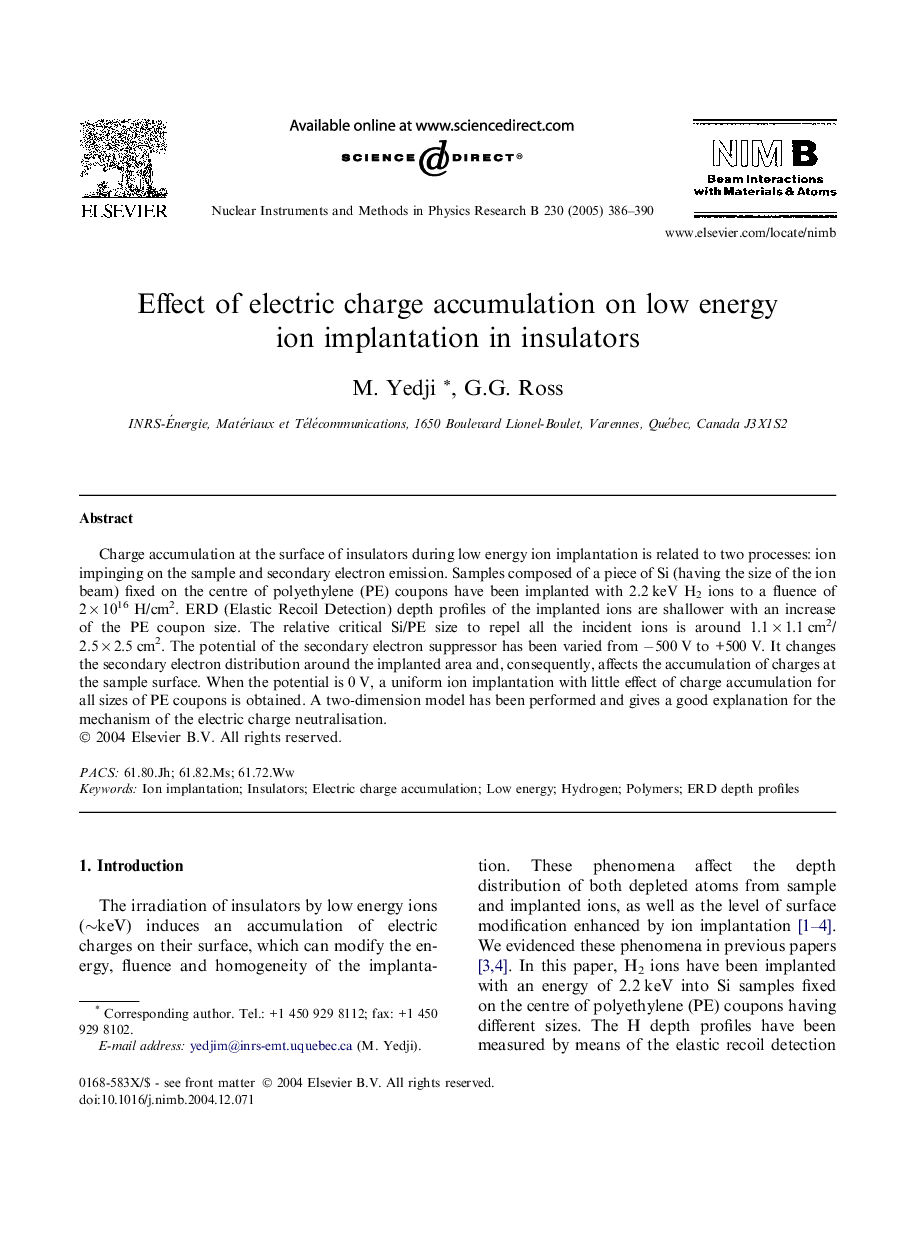| Article ID | Journal | Published Year | Pages | File Type |
|---|---|---|---|---|
| 9818310 | Nuclear Instruments and Methods in Physics Research Section B: Beam Interactions with Materials and Atoms | 2005 | 5 Pages |
Abstract
Charge accumulation at the surface of insulators during low energy ion implantation is related to two processes: ion impinging on the sample and secondary electron emission. Samples composed of a piece of Si (having the size of the ion beam) fixed on the centre of polyethylene (PE) coupons have been implanted with 2.2Â keV H2 ions to a fluence of 2Â ÃÂ 1016 H/cm2. ERD (Elastic Recoil Detection) depth profiles of the implanted ions are shallower with an increase of the PE coupon size. The relative critical Si/PE size to repel all the incident ions is around 1.1Â ÃÂ 1.1Â cm2/2.5Â ÃÂ 2.5Â cm2. The potential of the secondary electron suppressor has been varied from â500Â V to +500Â V. It changes the secondary electron distribution around the implanted area and, consequently, affects the accumulation of charges at the sample surface. When the potential is 0Â V, a uniform ion implantation with little effect of charge accumulation for all sizes of PE coupons is obtained. A two-dimension model has been performed and gives a good explanation for the mechanism of the electric charge neutralisation.
Related Topics
Physical Sciences and Engineering
Materials Science
Surfaces, Coatings and Films
Authors
M. Yedji, G.G. Ross,
